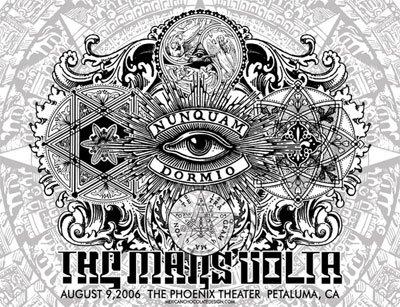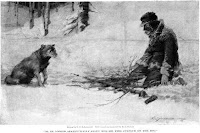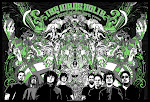
Ok, so we all understand that gambling offers you the chance of winning money or prizes, but have you considered some of the other reasons why we might choose to gamble?
It is human nature to feel excited when taking risks and the positive feeling gained from gambling is no different. “Will my numbers come up?” “Will my team win?” The sense of anticipation creates a natural high, an adrenalin rush, a feeling that very many of us seek when looking for fun and entertainment. A feeling that some people believe they cannot live without.
No I framesThe gambling environment can provide an escape from everyday life. Whether it be the glitzy casino environment, a loud and exciting amusement arcade or even an online betting company, for the time that we are taking part we can be surrounded by different people, different sounds and emotions, all of which stimulate and arouse our senses.
The media and advertising often portray a stylish, sexy, fashionable image of gambling. In film and TV we see characters enjoying a night at the casino or an afternoon at the races. There is often a suggestion of ‘high society’ and attending at ‘a place to be seen’.
Gambling is accepted as part of this country’s culture and as such is widely articipated in (with varying frequency) by the majority of the population. Some young people are introduced to gambling by learning to play card games with their parents at home, maybe we go the bingo with friends on a Friday night or meet after school at the amusement arcade.
“Electronic gambling machines and Internet gambling are the most addictive gambling games out there.”
The first thing to consider when asking this question is that not all gambling problems are created equal. Of the four different types of problem gamblers, the two that are possibly the most opposite in nature are the Action Gambler and the Escape Problem Gambler. The Action Problem Gambler tends to be drawn toward skill-focused games such as poker or blackjack, while the Escape Problem Gambler prefers to sit in front of a slot machine, alone. That being said, there are studies that show some gambling games to be more addictive than others.
Electronic gambling games may be the most addictive gambling games out there. Help Guide suggests that gamblers who play using electronic machines become problem gamblers almost three times earlier than those who stick with table games and racetrack gamblers. The exact numbers are 1.08 years for an electronic machine gambler to become addicted, versus the 3.58 years that is average for table game and race track gamblers to become addicted. No Iframes
The Illinois Institute for Addiction Recovery considers slot machines and video poker to be the “crack cocaine” of gambling. The Institute claims that it is their immediate gratification that makes video poker and slot machines so very addictive. Also, the Institute has found that gamblers progress much more quickly to the dangerous phases of gambling addiction when playing these electronic machines.
Internet Gambling can be one of the easiest forms of gambling to hide from friends and family. Gamblers can shut the door and erase their internet files to hide any evidence that they have been gambling online. Help Guide studied 389 gambling addicts who sought care at a health clinic. Only 31 participants reported that they were addicted to internet gambling, but these 31 were pathological gamblers. The study indicated that while internet gambling was the least common type of gambling noted, those who gambled on the internet were more likely to develop problematic gambling habits.
| | |
| “There are three phases to a gambling addiction: winning phase, losing phase and desparation phase” How do you go from being a social gambler to compulsive gambling? Robert L. Custer, M.D., former Chief of Treatment Services of the Mental Health and Behavioral Science Service of the U.S. Veterans Administration, is widely considered to be the father of professional help for the compulsive gambler. In 1972, Custer, a psychiatrist, established the first inpatient treatment center for compulsive gamblers at the VA Hospital in Brecksville, Ohio. Dr. Custer was the first to suggest that pathological gambling is a treatable illness. Through his efforts, the American Psychiatric Association classified pathological gambling as a psychiatric disorder in 1980. Dr. Custer identified the progression of gambling addiction as including three phases: 1. the winning phase The Winning Phase No IframesThe winning phase is a time when gamblers win at gambling multiple times, leaving them with an “unreasonable optimism” that they will keep on winning. Such gamblers begin to love gambling and trust that their luck will not run out. They keep on bidding and begin adding to their bids. These gamblers feel confident and comfortable, until the losing phase. The Losing Phase In the losing phase, gambling addicts begin to withdraw from friends and family. Gamblers start gambling alone and consider borrowing money by legal or illegal means. They become isolated by their gambling, and this isolation infiltrates their home lives. As these gamblers increase the quantity and amount of their gambling, their debts become a problem. These gamblers start chasing their losses, wanting to return to gambling directly after a loss with the hope that they can win the money back. The Desperation Phase The desperation phase occurs when the gambler spends more and more time gambling. This excessive time spent gambling leads to these gamblers feeling guilty, blaming others for their problems, and alienating their family and friends. The gamblers may begin to engage in illegal acts in order to have gambling money. They may turn to alcohol or drugs to combat the helplessness they feel and may experience psychological and social problems such as depression, emotional collapse, divorce, suicidal ideation or attempts, divorce, or arrest. | |
Problem gambling can be helped with the proper treatment which includes psychological therapy and support groups for compulsive gamblers.
When it comes to treating a gambling addiction, there is no magical bullet cure. Gambling addiction, like alcoholism, is an illness, and should be treated as such.
Treatment of a gambling addiction includes psychological, cognitive, behavioral and relaxation therapy either singly or in combination. It is essential that the person concerned acknowledges the progressive illness and shows a strong desire to stop his activity. Denial always results in failure of therapy.
Like smoking, the gambling addict should never gamble again. A major change in lifestyle is required and constant therapy is required to prevent the destructive behavior to re-occur. Therapy is long and may take years of professional counseling. Many times, as part of treatment, the compulsive gambler will be urged to join Gamblers Anonymous – a self-help support group program for compulsive gamblers.
Triggers such as alcohol and drugs should be strictly avoided. Those with associated depression, anxiety, mania and obsessive compulsive disorders, may need to be treated with drug therapy along with psychotherapy.
“The compulsive gambler will do anything to spend more time gambling and the impact can be huge.”
Pathological gambling affects the gambler, their family, their employer and the community. As the gambler goes through the phases of their addiction as previously mentioned, they spend less time with their family, spend more of the family's money on gambling until their bank accounts are depleted and then may steal money from family members.
At work, the pathological gambler misuses time in order to gamble, has difficulty concentrating and finishing projects, may show abnormal mood swings and may engage in embezzlement, employee theft, or other illegal activities.






